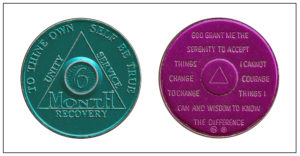According to the National Institute of Alcohol Abuse and Alcoholism (NIAAA), “hangover symptoms peak when the blood alcohol concentration in the body returns to about zero.” So if you think that you will feel fresh and normal once the alcohol has left your system, you are sadly mistaken. Keep in mind, this statistic does not factor in instances of alcohol dependence. Someone who is dependant on alcohol will not only experience the symptoms of a standard hangover, but they are also likely to develop alcohol withdrawal symptoms as their body detoxes. The length of time that it takes to detox from alcohol can vary significantly depending on a number of factors.
Alcohol Detox Timeline Overview
The detox timeline for alcohol does vary but always follows a general pattern. The timeline is measured based on when the last drink was consumed. Here is what to expect based on approximately how long it has been since an individual has consumed their last alcoholic beverage.
- 6 to 12 hours: Mild withdrawal symptoms begin to appear
- 12 to 24 hours: Moderate to severe withdrawal symptoms begin to appear
- 72 hours: Delerium Tremons symptoms appear
- 5+ days: Symptoms taper off
Factors Affecting Alcohol Detox Timelines
Not everyone experiences moderate to severe withdrawal symptoms. The severity and length of time these symptoms present for depends on:
- Length of use: The longer someone has been heavily drinking alcohol, the more severe their symptoms will be, and the longer they may last.
- Amount used: Similar to the length of use, someone who drinks heavier will experience more severe symptoms.
- Cross drug use: When other drugs are taken in conjunction with alcohol it can significantly exacerbate the intensity and length of withdrawal.
- Nutrition & Hydration: A nutritious diet, proper hydration, and vitamin and mineral supplements can help the body process alcohol for quicker healing. This can reduce the severity of withdrawal symptoms and speed up how long it would take to detox from alcohol.
- Biology: Various biological factors including genetics, gender, etc., can also cause alcohol detox to be longer and more severe or shorter and less severe.
How Long Does Alcohol Stay In Your System?
As mentioned earlier, symptoms of a hangover (as well as detox) typically peak when an individual’s BAC hits 0. This means that if we know when there is no longer any alcohol in one’s system, then theoretically we will know when the symptoms are as bad as they are going to get. The factors listed above that affect alcohol detox timelines can also affect how long alcohol stays in your system. As a general reference, someone who is not dependent on alcohol can refer to a BAC table to determine how much alcohol is still in their system. However, most of these tables only go up to a certain amount of drinks. Someone who drank to an extreme excess or who has developed a severe alcohol dependence may not reach a BAC of 0 for 72 hours.
Alcohol Testing
As mentioned, BAC charts are a good way for the average person to get an idea of how much alcohol may be in their system, but they do have their limitations. There are a number of ways to test an individual’s BAC but not all of them can detect alcohol for the same amount of time.
- Breathalyzer: up to 24 hours
- Blood test: 12 to 72 hours
- Urine test: 12 to 48 hours
- Hair test: several months
Are you or a loved one ready to detox from alcohol? If you are worried about how long it will take or how severe the symptom may be, an alcohol detox program can help. Find a treatment center near you.









